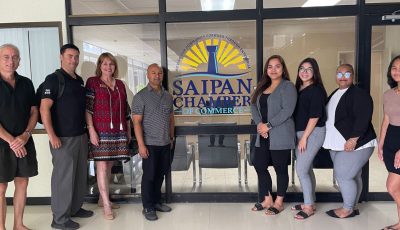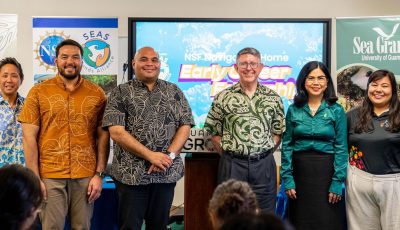Regents discuss facility financing
The Northern Marianas College Board of Regents discussed yesterday facility financing through the U.S. Department of Agriculture, ahead of a scheduled meeting with USDA Area Director Joseph Diego on Jan. 21.
Regent William Torres, who has been exploring alternative financing mechanisms for the college’s reconstruction efforts, led the discussion.
Guam colleges have availed of the Community Facilities Direct and Guaranteed Loan program under the USDA’s Rural Development program.
The University of Guam, for example, has borrowed $13.5 million over 40 years at 4.5 percent interest, and Guam Community College has borrowed $3.5 million.
College president Dr. Sharon Hart said she would be meeting with Guam Community College president Mary Okada and UOG president Dr. Robert Underwood next week and would ask about the “collateral” committed in these deals.
Saipan Tribune learned that UOG services its debt through a combination of commitment from the Guam Legislature for an annual appropriation of $500,000 per year for the life of the loan, $200,000 from the UOG Endowment Foundation, and $50,000 from internal revenue sources.
Torres said the “usefulness” of having a foundation involved is that they are “outside the debt ceiling of the government.”
But this might not apply to NMC, according to regent Juan T. Lizama, as the NMC Foundation is not a 501(c)(3) organization, or a tax-exempt charitable organization.
“Until such time we have a 501(c)(3) there is no way this college can act like how Guam is acting right now,” Lizama said.
But Torres also pointed to the Public School System who he said in the past serviced a debt of about $10 million through a commitment from the Legislature.
In 2011, a master plan for reconstruction was adopted by the board that would cost some $34 million to $37 million and be implemented in phases. In 2012, As Terlaje was set as the permanent campus for NMC.
But since then “financing [for reconstruction]—much to our surprise—has been more tough than we thought,” Torres told the board.
“There needs to be an alternative way [for facility financing] so our students won’t have to bear with this kind of learning environment,” he said.
The college has not undergone major reconstruction since it was built on or about 1955 as a single story, semi-concrete hospital.



























